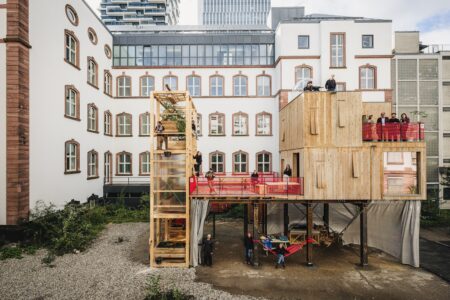TLmag40: The Ideal Home
Our 2024-2025 yearly edition: TLmag 40: The Ideal Home, guest edited by Chris Dercon, is now out in newsstands and online via Cafeyn. The 300 page issue brings together an engaging and provocative exploration of what is meant by the ‘Ideal Home’.
For a Felicitious Living
By Chris Dercon
“Ideal homes” are things of desire in more than just one way. The novel “Things: A Story of the Sixties” by Georges Perec from 1965 unforgettably tells the story of such a desire. In Perec’s novel, a young Parisian couple develops an almost maniacal yearning for the best “things,” read: design products— alas, which they ultimately cannot acquire. However, in Perec’s story we also detect another kind of desire. Namely for an upfront contemporaneous way of living. And for that, certain things are more fit to express that realisation than others.
But now a kind of riddle pops up: why do some homes—think of their interiors—created in the recent past, or even a long time ago, strike us often as more ideal than others, some of which include those of today. This is not always a question of taste, good or bad, it is probably because the category of contemporary living has been expanding continually in itself. If we are to believe the hordes of magazines dedicated to “ideal homes” we sometimes, nearby, literally feel the past and see the future growing. Is it, that first and foremost, as Emanuele Coccia writes, “Because we build houses to live better. The essence of each house lies in this adjective. The foundation of each house is moral, not purely aesthetic or architectural.”
I thought about this as I remembered sitting on the terrace of Gio Ponti’s seaside house overlooking the Mediterranean, the Villa Allungata (The Long House) at Capo Perla in the municipality of Capoliveri on Elba. The Long House has a markedly long plan, it has an extended front with a view of the sea from every room. Inside, the plan is laid out to provide a balanced communal life, generous sleeping quarters make it possible for each individual to withdraw while still enjoying the view. I added one thing to Ponti’s huge reddish terrace, a ping-pong table, an all-weather 722 C-Cornilleau, painted in that striking olive green colour, listed as Pantone 357-U. The thin tubular metal under-structure equipped with rubber wheels, and the large green wooden plane circumscribed with lines in clear white did not contradict the perfection of Ponti. I had now reached an even more ideal home. For a ‘felicitous living’ was Ponti’s ideal.
What does this expression really mean and where does it come from? In this issue we are exploring many different expressions of past, present and future felicitous living through the minds and eyes of theoreticians, curators, designers, artists, writers and even inhabitants of “ideal homes,” of both different regions and times: a diverse annexations of disciplines, not unlike the game of ping pong.
At the end of our journey, exploring ideal homes, if the term is even still applicable, we present instead of an index an annex, about why words and architecture do so well with one another.
Love or the Mystery of the Ideal Home
By Lise Coirier
Far from the classical definitions, I would like to talk about the mystery that surrounds ideal homes, whether in terms of their presence or their unique souls. The search for a “home” is a highly subjective philosophy, based on a particular vision of life, and it is supported by architects, anthropologists, writers and poets, as well as by the protagonists, who are guided by a visible or invisible force and by the desire to create their own domestic environment, in their own image, sometimes even as a work of art. This environment, which offers a living space, is a kind of promise of happiness, a place to anchor oneself and a projection towards an ‘elsewhere’. With the cliché of a jetty jutting out into the sea, facing a horizon that promises a better life, the ideal home prefigures an escape from everyday life and the increasingly pervasive global standardisation. By pursuing this ideal with courage and determination, man faces the myth of a foundation that does not yet exist, comparable to the crystallisation that Stendhal spoke of a century earlier in his novel De l’amour, and which creates a link between himself and the world, whether real or imaginary. This need to exist through a house, under a roof, in a ‘haven of peace’ that can protect us, goes back to the dawn of time; it is also in symbiosis with our desire to love and to transmit values that take shape over time, like an experience ‘to be lived’ and shared. The concept of the “In-betweenness” also applies to the theme of the ideal home, which our Guest Editor Chris Dercon sketches with a keen eye in this special issue, ignoring the clichés that are often associated with it. Off the beaten track, Chris Dercon guides us through the artistic and hidden intricacies of these ideal homes, which are so unusual and fascinating because of their highly personal and intimate nature. This visual and intellectual stroll opens up avenues of thought that are far from trivial, questioning the very nature of living and living in harmony with one’s environment. Emanuele Coccia talks about this in his book Filosofia della casa.Lo spazio domestico e la felicità (2021) and defines this ideal house, in contrast to the “living machine” and beyond its space-time and architecture, as a “villa of mysteries”, to evoke Pompeii, or the true “temple of love”.
Find TLmag40: The Ideal Home on newsstands, on cafeyn.co or order a copy onliine.













